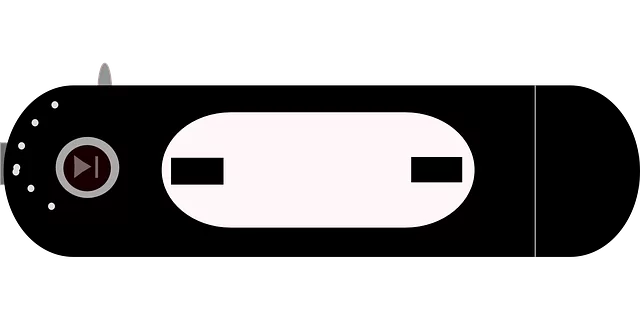The DivX Format is a leading video codec known for balancing efficient compression with high-quality visuals. Introduced in the late 1990s, it revolutionized digital media by significantly reducing file sizes while maintaining HD integrity, making it ideal for streaming and online sharing. DivX offers advanced algorithms, supports various codecs, and ensures smooth playback across devices, catering to personal projects and professional productions. Its versatility has made it a go-to choice for video encoding in areas like streaming media, digital TV, and online content delivery, with promising future integration into smart home devices.
“The quest for efficient video encoding and decoding has led to groundbreaking innovations, with one such pioneer being the DivX format. This article delves into the intricacies of the DivX standard, exploring its role in optimizing video transmission. We’ll start by understanding the pressing need for efficient compression, then trace the historical development of DivX. Subsequently, we’ll uncover its key features, benefits in encoding and decoding processes, and real-world applications. By the end, you’ll grasp why DivX is an indispensable tool for seamless video playback.”
Understanding Video Compression: The Need for Efficiency

Video compression, a vital process in modern media, is about maximizing video quality while minimizing file size. This is crucial for efficient storage, streaming, and playback on diverse devices. The need for efficiency arises from several factors. First, high-definition (HD) videos consume massive amounts of data, making them impractical for online sharing or storage without compression. Second, limited bandwidth and processing power necessitate smaller file sizes to ensure smooth video playback without buffering delays.
The DivX format, a popular video codec, has been at the forefront of efficient video encoding. It employs sophisticated algorithms to remove redundant data from videos while preserving critical visual information. This balancing act ensures that compressed videos maintain their original quality, making DivX an excellent choice for both professional content creators and casual users looking to share or stream videos seamlessly.
Introduction to DivX: A Historical Perspective

DivX, a pioneering video compression technology, has left an indelible mark on the digital landscape. Emerging in the late 1990s, DivX Format revolutionized video encoding and decoding, offering unprecedented efficiency and quality. Initially developed as an alternative to proprietary formats, it quickly gained traction for its ability to compress videos significantly while preserving high-quality visuals.
This historical pioneer facilitated the sharing of videos online, making media consumption more accessible and affordable. Over time, DivX evolved to meet changing needs, adapting to new technologies and standards. Today, its legacy continues through various modern codecs that build upon its foundational principles, ensuring efficient video encoding and decoding for a wide array of applications.
Key Features of DivX Format: Advantages and Benefits

The DivX format stands out as a powerful video encoding solution, offering both efficiency and quality in its core features. One of its key advantages is the ability to compress videos significantly while preserving high-definition visuals, making it perfect for streaming and online content delivery. This efficient compression reduces file sizes without compromising on video quality, ensuring faster buffering times and smoother playback experiences.
Additionally, the DivX format supports a wide range of codecs, allowing users to choose the most suitable one based on their needs. This flexibility enables optimal video performance across various devices and platforms. Its robust encoding capabilities make it a go-to choice for anyone seeking seamless video processing, whether for personal projects or professional productions.
How DivX Facilitates Efficient Encoding

The DivX format, developed for efficient video compression, plays a pivotal role in streamlining encoding processes. Its innovative codecs, like DivX Encoder, offer advanced tools to optimize video quality while significantly reducing file sizes. This capability makes it ideal for various applications, from online streaming to mobile device content delivery.
By leveraging sophisticated algorithms, DivX intelligently compresses videos without compromising visual fidelity. This results in smaller file sizes, enabling faster uploads and downloads, and ensuring smooth playback across different devices and networks. The format’s flexibility also supports a wide range of video resolutions, catering to both high-definition and standard definition content.
Decoding DivX: Ensuring Seamless Playback Experience

The DivX format has long been recognized as a powerful video encoding standard, offering efficient compression while maintaining exceptional video quality. Decoding DivX videos seamlessly is crucial for an uninterrupted playback experience, making it a preferred choice for content distributors and viewers alike. The DivX codec is designed to minimize file sizes without sacrificing visual fidelity, ensuring smooth streaming and fast download times.
By utilizing advanced encoding techniques, the DivX format compresses video data effectively, allowing for smaller file sizes without compromising on picture clarity. This makes it ideal for online distribution, where efficient bandwidth utilization and quick load times are essential. Decoding this format efficiently is achieved through dedicated decoders that optimize the playback process, resulting in a seamless viewing experience for high-quality videos.
Real-World Applications and Future Prospects

The DivX format has found its place in various real-world applications, revolutionizing video encoding and decoding. From streaming media to digital television, it offers efficient compression that reduces file sizes without compromising quality. This makes it ideal for online content delivery, ensuring smooth playback even on devices with limited bandwidth. In the realm of personal videos, DivX enables users to store and share high-definition footage effectively, preserving intricate details and vivid colors.
Looking ahead, the future prospects of DivX seem promising. With advancements in technology, it is poised to integrate further into smart home devices, enhancing their multimedia capabilities. As video content continues to grow in demand, DivX’s ability to provide efficient encoding and decoding solutions will remain invaluable. Its adaptability and compatibility with diverse platforms make it a preferred choice for content creators and consumers alike, ensuring an immersive viewing experience across different devices and settings.
The DivX format has proven itself as a powerful tool for efficient video encoding and decoding, addressing the critical need for reduced file sizes without compromising quality. With its historical roots and continuous evolution, DivX offers key advantages such as faster encoding speeds, smaller file sizes, and excellent playback compatibility. As technology advances, the real-world applications of DivX are expanding, promising a seamless and high-quality multimedia experience for users worldwide. Understanding what is DivX Format and its benefits can help shape the future of video distribution and accessibility.
